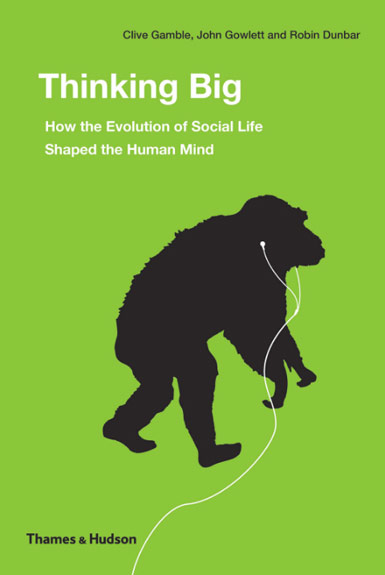Featured Book
Thinking Big
How the Evolution of Social Life Shaped the Human Mind
Today we all exemplify, and our contemporary culture continues to be driven by, the same social brain — including the community sizes and levels of intentionality — that appeared with the earliest members of our species some 300,000 years ago.
It is commonly thought that current civilization began with revolutions, one of cognition 50,000 years ago, and another in Neolithic times, about 11,000 years ago. The authors pose an alternative explanation, that it has been a matter of gradually increasing brain growth during our history, not at specific points of revolution. They also draw attention to something different about humanity: where all other species live in an external environment that shaped their evolution, we humans have shaped our evolution by responding and adapting to our own increasing population. Thinking Big combines archaeology and social- and neuro-psychology to re-examine human evolution in light of this “social brain hypothesis” – an explanation for the fact that primates have unusually large brains for body size.
All other species live in an external environment that shaped their evolution; we humans have shaped our evolution by responding and adapting to our own increasing population.
Most explanations for the dramatic increase in human brain size emphasize the brain’s role in sensory processing or in innovatory skills, such as tool-making. But evidence now suggests that the cognitive demands of living in large, complex societies selected for large brains, namely the outer, most recently evolved layer of the brain: the neocortex. The authors of Thinking Big see this link as crucial to understanding human evolution. They set out first to explain it and subsequently to describe how the interactions between individuals – the interplay between the cognitive and social aspects of our behavior – shaped our human history and its evolution.
The Role of the Neocortex in Dealing with Complexity
The neocortex is found only in mammals (though there is an equivalent in bird brains) and over the 60-70 million years of primate evolution, it has increased in size as species evolved. And as primates evolved so did their sociality.
The costs of a social life are high. Living in close proximity with others can be stressful and result in hormonal imbalances that can cause temporary female infertility. Increases in body and brain size require more nourishment and thus make greater time demands; additionally members of a group need to search for food over a wider area than they would as individuals. The larger the group, the more time individuals must spend in grooming to establish and maintain social bonds. Bipedalism enabled wider foraging in less time, but changes in diet were then needed to gain more nourishment in less time. Living in groups provided protection against predators but it also involved an unprecedented complexity created by the individuals and how they interact with each other under varying circumstances. So, why did evolution favor sociality?
Dealing with this social complexity on a daily basis is the job of the neocortex; as a result, its size determines the size of the functioning social group. Every primate group has a species-typical limit beyond which the group begins to disintegrate because its members can no longer maintain coherent relationships.
Dunbar’s Number—How Many Friends Can We Have?
“Cognitive load,” our mental capacity for managing information, appears to limit our social relationships to about 150 people, a number established by Robin Dunbar and known as “Dunbar’s number.” This is by far the largest social network of any animal, and almost three times larger than that of our nearest hominid relative, the chimpanzee. Dunbar’s number, 150, seems to be a true limit: just as in earlier human societies, it holds fast despite our exposure to massive numbers of people in modern society. There are what Thinking Big describes as ‘layers’ of our personal social networks, each one three times larger than the one before. Individuals tend to have a group of about 5 intimates, a support group of about 15 best friends, a collection of about 50 good friends; and about 150 friends in total. Beyond that we have about 500 near acquaintances, people with whom we have casual relationships, and about 1,500 far acquaintances, those who we recognize but have no relationship with.
Social Bonding: Mentalizing
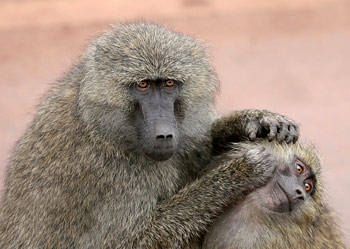
Social bonding is a two-part process for all primates, including humans. One part is the cognition that enables mentalization, which underpins the needed trust and reciprocity. Mentalizing, or mindreading, is the ability to understand or infer what another individual is thinking and to act with this in mind. It’s now clear that the neocortex is responsible for this critical social skill. It allows us to keep several people’s intentions in mind at the same time, and to adjust our behavior accordingly. The number of people that we can include depends on the volume of neural matter found in an area of our neocortex, the orbitofrontal cortex.
Most people are capable of 5 levels of intentionality…About 20% of us can manage a sixth.
“Intentionality” indicates the degree of mentalization needed to understand another’s intention. Intentionality levels denote the extent of this key cognitive ability: 1) “I realize I have a belief”; 2) “I have a belief about your belief”; 3) “I believe you have a belief about what I believe”, and so on. Most people are capable of 5 levels of intentionality, for instance: “I don’t believe that you actually think me capable of disliking George because he didn’t defend Alice when John called her a fool.” About 20% of us can manage a sixth level, and a few people can go beyond that; they also have larger than average social groups. This correlation suggests how evolution selects for social success: those who have larger orbitofrontal cortices have greater social success and pass their brain advantage to a larger number of descendants, increasing the prevalence of this feature across future generations.

The second part is the emotional basis of our social life, which, in humans, needs our ability to mentalize: to share complex human feelings and experience, for example, guilt, compassion, pride and shame. The production of endorphins is important here because these provide a neurological reward which helps to create friendships and build relationships. Grooming releases endorphins: monkeys and apes choose partners for grooming which become important reliable relationships. Physical exertion in all primates produces the relaxing effect of endorphins which builds friendships and trust. In humans, two other activities also trigger the release of endorphins: laughter and performing music (listening to music doesn’t have anything like the same effect) probably because they also cause physical stress, although in a more subtle manner than exercise or strong physical exertion. Not surprisingly emotional closeness and altruism go hand in hand.
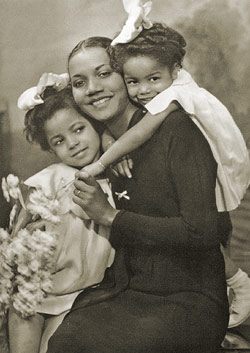
Social interaction and bonding begin with mother and child but expand to the larger groupings for food and protection. Primates with smaller brains and group sizes tend to bond by close contact – fingertip grooming, in particular. But when group size reaches 150, such intimate contact throughout the group is no longer possible. So new social experiences such as music, language, cooking and painting developed to substitute or amplify the endorphins produced by close contact and ensure the activation of the emotions we need for bonding. This amplification created culture and enabled us to stretch relationships across time, distance, and community size.
So new social experiences such as music, language, cooking and painting developed to substitute or amplify the endorphins produced by close contact and ensure the activation of the emotions we need for bonding.
We interact for different amounts of time with people in each layer of our social network. Today we seem to have about 2 hours per day which we devote to social interaction. About 40% of that time goes to our 5 close intimates and decreases markedly for each larger group. When time spent with friends decreases, emotional closeness does, too: “In short, time is everything, and when time is not invested in a relationship, relationships wither away.” The exception seems to be with family members, even extended family members. Kinship relationships are worth much more no matter in what layer of our social network they lay. Kinship is a strong amplifier of emotion, making more complex mentalization easier by serving as a kind of social storage, bundling together obligations, connections and emotional bonds under the label of “family.” It allows social relations to span distance and time, enabling settling of new territories and, eventually, exploration of the imaginative worlds of ancestry and the afterlife.
What Took Us So Long?
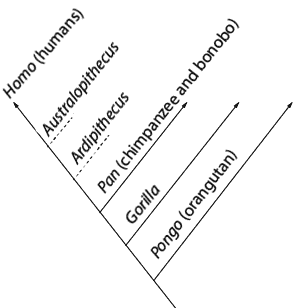
Humans and chimpanzees split from a common ancestry 7 million years ago. For the first 5 million of those years, hominids were essentially apes learning to walk upright. Brain size increased strikingly about 2 million years ago, and this is where the social brain emerges as an important evolutionary force. Homo is distinguished most clearly by a larger brain case, between 650 and 800cc in the earliest specimens, translating to group sizes of 80-90. It would have required 25% of daylight hours to create and maintain these social bonds and this, consequently, fostered significant changes in behavior.
Three Homo species had large brains (1,200-1,500cc): Homo heidelbergensis and two descendent species, Neanderthal, and Homo sapiens. Neanderthal brain size would seem to predict a group size of 140-150 – but the Neanderthal cerebral cortex was smaller than their overall brain size would suggest, so group size was probably only about 120, similar to Homo heidelbergensis. Researchers wonder why, with Homo sapiens’ larger brain and group size, it took until 50,000 years ago for artistic artifacts to become widespread. It would appear from archeological evidence that for 500,000 years, these large brains had no effect on tool design, artifact production, or levels of intentionality – and then, suddenly, modern human behavior emerged. But the authors posit a more gradual development culminating in production of artifacts whose persistence marks a point in a steady evolutionary process, rather than a revolutionary leap forward.
Vocal grooming, including laughter, enabled a human to bond with an audience.
Most recent human evolution took place during a period of global climate change when food resources became more widely dispersed. This forced us to evolve ways to sustain social bonds despite longer separations. Heightened mentalization skills enabled us to maintain our social lives even when others were not present; and the demands of our changing way of life expanded our need to create, use, exchange and keep tools and other objects, which, in turn, enhanced our social connections during separations. These changes involved cooperation, which also enhanced social bonds and produced the enlargement of our communities and our brains, despite the additional nutritional cost of neural matter. To handle this we evolved a smaller stomach, adopted a higher quality diet and began to use fire to cook our meals.
Stone tools, fire, and language are the three key elements that distinguish early humans from other species. They all appear very early, between 2 million and 500,000 years ago. These advances are linked by the co-evolution of our brains, bodies, materials and surroundings, all of which evolved in response to the increasing complexity and size of our social world. By 1 million years ago, these changes had created a distinctive niche for the skilled, large-brained hominids who eventually became modern humans.
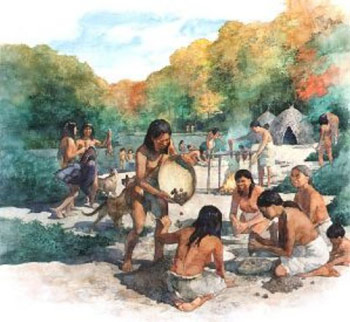
Dunbar’s calculations put the point where language was required at a minimum of 500,000 years ago, probably earlier. While the use of fire could extend the hours available for grooming and bonding, it could have been only a partial solution. Vocal grooming, including laughter, enabled a human to bond with an audience; it could also be amplified through group activities such as singing and ceremonies. What humans would have talked about would have most importantly been each other, but also would have included what to eat, with whom, and how to obtain food. As society expanded, communication must have improved as well, resulting in a long, slow evolution of language.
As language evolved, the process of amplification produced a gradual increase in variety, diversity, and sophistication of culture and artifacts; it produced storytelling and religion. Shared religious rituals, such as fasting and penance, trance induction and vision quests, released endorphins which facilitated bonding in larger groups. As recently as 50,000 years ago human religion would have been shamanic, a religion of experience as opposed to doctrine and theology. But even shamanic religion requires language, because in addition to the mentalization required to envision another spirit world parallel to the world of ordinary experience, it would also require communication of this concept and important details about it. A fourth order of intentionality is the minimum requirement for religion, so Neanderthals may well have had beliefs about a spirit world. But modern humans’ extra orders of intentionality allows for a significantly more sophisticated approach. The highest order of intentionality – fifth for most people – can be seen as the world of storytelling, origin stories, myths and legends, which reflect new abilities for coping with absence and separation.
Slow Evolution vs. Sudden Revolution
Social brain theory points to a long and slow evolutionary process, Thinking Big tells us, rather than a sudden revolutionary shift. This arc was propelled by the development of increasingly large and complex societies and more sophisticated social skills. Mentalization, sympathy, empathy, and a theory of mind have all been key to this evolution and have all been shared by all the hominid species since at least Homo heidelbergensis, including both Homo neanderthalensis and Homo sapiens. So it is not possible to cite a specific moment in history after which minds were modern and before which they were not.
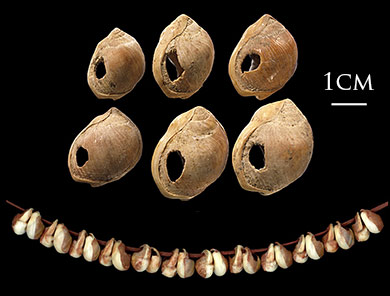
The idea of a sudden revolution in human cognition 50,000 years ago is based on evidence including pieces of ochre, shell or beaded necklaces, and long-distance trade. But these have all now been found to have a long history in Africa, some going back almost 300,000 years. So the evolution of modern humans proceeded gradually, rather than suddenly, and social brain theory points to two paths by which this evolution unfolded. Evidence suggests that the senses and emotions were amplified to enable increased social interaction, and at the same time, social signals were amplified through technology and artifacts to assure the success of social interaction. These were two separate channels of growth, but each stimulated the other.
Today we all exemplify the same social brain, including the community sizes and levels of intentionality that appeared with the earliest members of our species.
Another mechanism for coping with larger settlement sizes is selective networks. Because we are still limited by Dunbar’s number, we create our individual communities within the larger settlement. Typically, trades offered an avenue for this type of choice: potters knew other potters, merchants dealt with other merchants, and leaders associated with other leaders. We do the same today by associating with people of similar interests, professions, hobbies, and so on. We have developed the ability to select and switch networks without difficulty.
Writing is another example of expanding the use of technology to meet the challenges of living in larger societies. Writing extends language across boundaries of time and space, and has created new historical continuity, enabling understanding of the last 5,000 years in far more detail than earlier periods. And writing also has enabled creation of the digital age, including the latest, potentially most powerful, amplification to date: the internet.
We have now connected billions of people into a single, world-wide society, the largest possible concentration of social communities. But it turns out that we remain limited by Dunbar’s number: most people’s Facebook pages list only between 100 and 200 “friends.” And studies of e-mail and Twitter communities reveal the same typical sizes.

Homo sapiens first appeared about 300,000 years ago in Africa, and today we all exemplify the same social brain, including the community sizes and levels of intentionality that appeared with the earliest members of our species. Today’s culture, including the latest social media, continues to be driven by the social brain that originated deep in our evolutionary past and developed in an unprecedented way, in an environment of other people and the complexity of society.
The three authors are co-directors of a collaborative and interdisciplinary research project “Lucy to Language – the Archeology of the Social Brain,” which, over a period of seven years, set out to explore the past and the present to provide a fuller account of where we have come from and why we act the way we do. They examine the idea that it was our social lives that drove the growth of our most distinctive feature: the human brain.
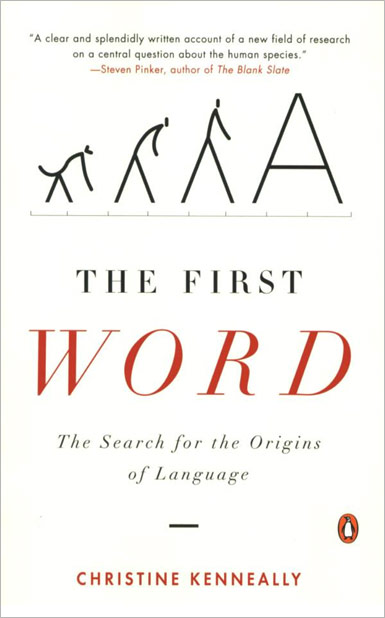
The First Word
The Search for the Origins of Language
Christine Kenneally
Human communication depends on the same genetic foundations as other animals. Some were born with a greater inclination to collaborate, forming the symbolic communication of language.
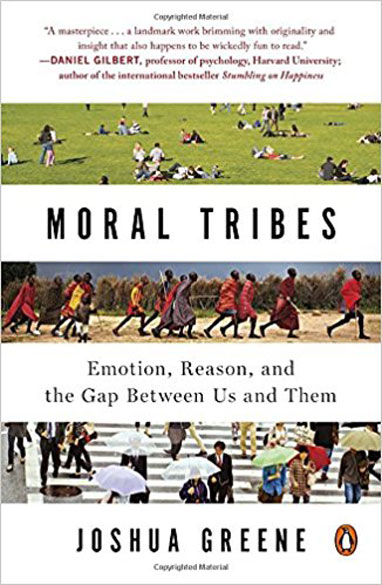
Moral Tribes
Emotion, Reason, and the Gap Between Us and Them
Joshua D. Greene
Our innate moral behavior evolved over millions of years to promote cooperation within our group. Each group has its own moral code, which provides a map for how individuals can live successfully within it. Our other innate tendency, to favor our group over all others, is something we need to understand and mitigate to address the existential challenges of our modern global society.

The Mountain People
Colin Turnbull
The story of the IK tribe of northeastern Uganda is a classic study of how a society’s concept of fairness and justice can quickly devolve when its people are cut off from their accustomed means of livelihood and forced to compete for their very survival.

The Matter with Things
Iain McGilchrist
One of McGilchrist’s central points is that our society is one in which we rely on representations of the world as our way of knowing it. Scientific theories expressed in mathematical form, economic models, photographs – all re-present the reality they purport to describe.
In the series: Our Mind in the Modern World
- An Ancient Brain in a Modern World
- Our Unconscious Minds
- Maintaining a Stable World
- The Multiple Nature of Our Mind
- Connecting with Others
- Morality’s Long Evolution
- Unconscious Associations
- The Brain’s Latent Capacities
- God 4.0
- Multimind: A New Way of Looking at Human Behavior
- Social
- The Weirdest People in the World
- The Righteous Mind
- New World New Mind
- Moral Tribes
- The Mountain People
- The Matter with Things
- Humanity on a Tightrope
- Beyond Culture
Related articles:
Further Reading »
External Stories and Videos
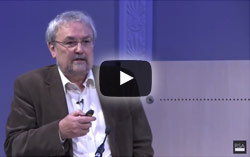
Watch: Robin Dunbar on Evolution
RSA
Evolutionary anthropologist Robin Dunbar discusses the cognitive and social underpinnings of human evolution.

